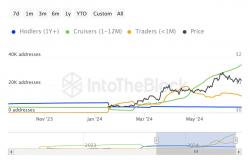A recent study conducted in Chile revealed that walking at a fast pace is not only beneficial for cardiovascular health, but can also reduce the risk of obesity and improve other health indicators.
The research, which used data from the National Health Survey (ENS), highlights the importance of walking speed as an indicator of health and suggests that brisk walking could be a simple and effective strategy to improve public health.
In Chile, two investigations have been developed that demonstrate this association, both led by members of the ELHOC Research Chile Consortium, published in the Medical Journal of Chile with background from the National Health Survey (ENS).
In this way, data that are representative of the Chilean population have been taken as a basis, and that account for people’s self-perceived walking pace.
The second research was recently published titled “Association between walking speed and obesity in the Chilean population: Results of the 2016-2017 National Health Survey.” This was led by Nicole Lasserre, an academic from the Nutrition and Dietetics program at the Universidad Santo Tomás Los Ángeles, with also the participation of prominent academics and researchers from the Universidad Católica del Maule, Universidad de Los Lagos, Universidad Diego Portales and University of Glasgow.
The results highlight that people who moved at a normal and fast walking speed had lower body weight, waist circumference and body mass index than people who walked slowly. Regarding the probability of having obesity, the group that moved at a fast walking speed maintained a lower risk of presenting obesity and of its location being at the abdominal level (abdominal obesity), which was not observed for the group that walked at normal pace.
In short, this project yielded similar results to the first work carried out in Chile, also establishing differences between slow, normal and fast walking speeds. These distinctions are due to the latest National Health Survey (2016-2017), where respondents described their own usual walking speed.
Through this instrument, it was reported that those who walk at a fast walking speed were younger, had a higher daily consumption of fruits and vegetables, lower levels of physical inactivity and greater total physical activity during the day. In addition, it was determined that other types of factors such as sociodemographics, lifestyles and multimorbidity category, among others, influence obesity states.

WALKING SLOWLY, GREATER RISK
The first work was published in 2020, and considered background information from the 2009-2010 National Health Survey. It was analyzed that people who walked at a slow pace (slow walking speed) met specific characteristics, including: Being over 65 years of age, having a low level of education, and presenting a nutritional status of obesity. This trend was predominantly observed in women and people living in rural areas.
It was shown that people who reported walking at a slow pace, compared to those who reported walking at a normal pace, presented: Higher levels of body weight, BMI, waist circumference, higher concentration of triglycerides and lower concentration of HDL cholesterol (“good” cholesterol). ), therefore, a greater probability of having diabetes mellitus, HTN and metabolic syndrome.
GEAR SPEED AS AN INDICATOR OF HEALTH
Researcher Nicole Lasserre explained that increasing the intensity of walking means, at the same time, decreasing the time needed to meet the recommendation of 10,000 steps a day.
A fast walking speed (greater than 200 steps per minute) would mean that 10,000 steps could be completed in 50 minutes, which is more feasible to accomplish in a day. On the contrary, reducing walking to 100 steps per minute requires about 1 hour and 40 minutes to obtain benefits associated with physical activity.
“The results of these national investigations reveal the importance of walking speed as an indicator of health, which could be used as a question of screening in ambulatory health care to easily identify high-risk individuals who could benefit from metabolic health assessments and intervention plans. On the other hand, increasing walking speed in daily activities could be a simple, safe, economical and feasible method to increase physical activity and daily energy expenditure and thus maximize its benefits in the obese population,” explained Nicole Lasserre. .
Finally, the expert emphasized that this evidence can be relevant for the generation of physical activity recommendations and public policies aimed at increasing the population’s physical activity levels, by promoting a walking pace with an adequate intensity to generate important metabolic and cardiovascular.
SEE HERE MORE DETAILS OF THE RESEARCH “ASSOCIATION BETWEEN WALKING SPEED AND OBESITY IN THE CHILEAN POPULATION”.
DID YOU KNOW?
-
According to data from the National Health Survey, 35.1% of the population over 15 years of age is physically inactive (42.5% in women and 27.4% in men).








